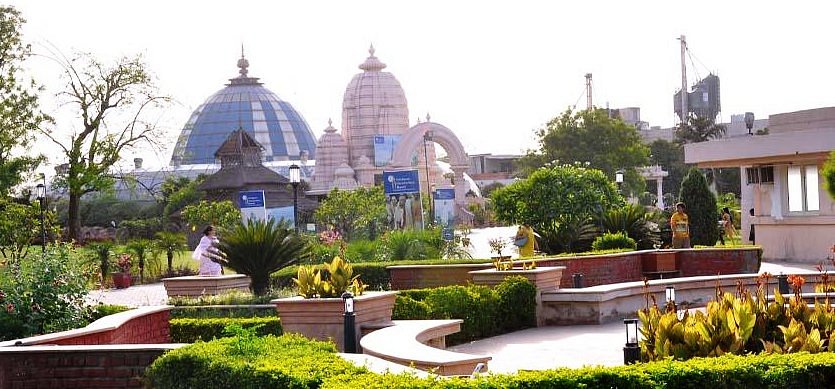Divine Vrindavan
The town of Vrindavan in Mathura District of Uttar Pradesh is as relevant to Hindus of India as Krishna is to the great Indian epic, the Mahabharata. Its religious and mythological connotations are central to the worship of Krishna in the pantheon of Hindu gods. A precocious child, a trusted friend, a performer of miracles, a romantic lover and a saviour to all; Vrindavan is deeply associated with the life and times of Krishna and the tales woven around his life.
Vrindavan is located about 10 kilometres away from Mathura, on the Delhi-Agra National Highway. Mathura is Krishna’s birthplace and is one of the seven holy cities for Hindu pilgrimage but Vrindavan was the site of an ancient, dense forest where Krishna spent much of his youth and adult years. Vrindavan also finds mention in the Hindu epic Mahabharata.
Folklore and recorded evidence of Krishna’s life and his childhood shows us that he was raised in the village of Gokul near Vrindavan by his foster parents, Yashoda and Nanda. Vrindavan was the site of Krishna’s early childhood; the dense forests were ideal for him and his brother Balarama to play games and indulge in childhood pranks and pastimes with other children from Gokul. Vrindavan is specially known for Krishna’s humorous antics and pranks, his dalliances with village girls from Gokul known as Gopis and his romance with Radha, his lifetime companion which became the basis for the ‘bhaktiras’, the divine love between master and disciple. It is this divine love that bears relevance to Vrindavan and the manner in which it has grown over the past few centuries to not only becoming a place of worship for Krishna followers but also as a seat of learning of Vaishnavism. The famous Sanskrit poet, Jayadeva’s poem Gita Govinda is a compilation of the divine life of Krishna. ‘Vrinda’ or Brinda refers to Tulsi or Holy Basil, the single most important ingredient of all poojas or worship of the gods in Hinduism. The Tulsi leaves are offered in worship and garlands are strung to adorn the gods. ‘Vana’ is the Sanskrit word for forest; it is believed that Vrindavan was once abode to large, dense growths of the Tulsi plant, hence the name.
The modern town came into existence in the early 16th century, around one of the oldest surviving temples, the Govinda Dev temple, renowned for its stupendous architecture. Govind is another name, by which Krishna is referred to. Since the time of the Mahabharata and the famous Kurukshetra war, where Krishna held centre stage, Vrindavan fell into decline and lost its once pristine glory. Hinduism had by then been undergoing upheavals and revolutionary movements and it was not until Chaitanya Mahaprabhu, the singer-saint from West Bengal set out to re-discover Vrindavan, did the world hear once more of this once historic site.
Folklore and recorded evidence of Krishna’s life and his childhood shows us that he was raised in the village of Gokul near Vrindavan by his foster parents, Yashoda and Nanda. Vrindavan was the site of Krishna’s early childhood; the dense forests were ideal for him and his brother Balarama to play games and indulge in childhood pranks and pastimes with other children from Gokul. Vrindavan is specially known for Krishna’s humorous antics and pranks, his dalliances with village girls from Gokul known as Gopis and his romance with Radha, his lifetime companion which became the basis for the ‘bhaktiras’, the divine love between master and disciple. It is this divine love that bears relevance to Vrindavan and the manner in which it has grown over the past few centuries to not only becoming a place of worship for Krishna followers but also as a seat of learning of Vaishnavism. The famous Sanskrit poet, Jayadeva’s poem Gita Govinda is a compilation of the divine life of Krishna. ‘Vrinda’ or Brinda refers to Tulsi or Holy Basil, the single most important ingredient of all poojas or worship of the gods in Hinduism. The Tulsi leaves are offered in worship and garlands are strung to adorn the gods. ‘Vana’ is the Sanskrit word for forest; it is believed that Vrindavan was once abode to large, dense growths of the Tulsi plant, hence the name.
The modern town came into existence in the early 16th century, around one of the oldest surviving temples, the Govinda Dev temple, renowned for its stupendous architecture. Govind is another name, by which Krishna is referred to. Since the time of the Mahabharata and the famous Kurukshetra war, where Krishna held centre stage, Vrindavan fell into decline and lost its once pristine glory. Hinduism had by then been undergoing upheavals and revolutionary movements and it was not until Chaitanya Mahaprabhu, the singer-saint from West Bengal set out to re-discover Vrindavan, did the world hear once more of this once historic site.
1. Banke Bihari Mandir
Shri Banke Bihari Mandir is a Hindu temple dedicated to Lord Krishna in the holy city of Vrindavan in the Mathura district. One of the most revered shrines in the country, this temple is among the 7 temples of Thakur of Vrindavan which also include Sri Radhavallabh Ji, Shri Govind Dev Ji and four others. As you come in the presence of the Banke Bihari Temple, you are confronted with the stunning Rajasthani- style edifice of the temple, which is adorned with arched windows and meticulous stonework. The image of Lord Krishna in the temple appears in the form of a child and is seen standing in the Tribhanga position. One interesting fact about the Banke Bihari temple is that there are no bells or conchs in the premises, as the Lord does not like the sound of these instruments. Divine invocations are performed by peaceful chants of ‘Radha Naam’.
The word ‘Banke’ means bent in three places, while the word ‘Bihari’ means supreme enjoyer. The idol in Banke Bihari Temple was originally worshipped under the name of Kunj- Bihari which means enjoyer of lakes. The sewa of the Bihariji is unique in its own way. It is performed in three parts every day ie Shringar, Rajbhog and Shayan. While Shringar (which includes bath, dressing and adornment with jewellery like crown and necklaces) and Rajbhog (feast) are offered in the forenoon, Shayan Sewa (Shayan means sleep) is offered in the evening. One of the holiest places when it comes to the worship of Lord Krishna, the Banke Bihari Temple is thronged by devotees all through the year.
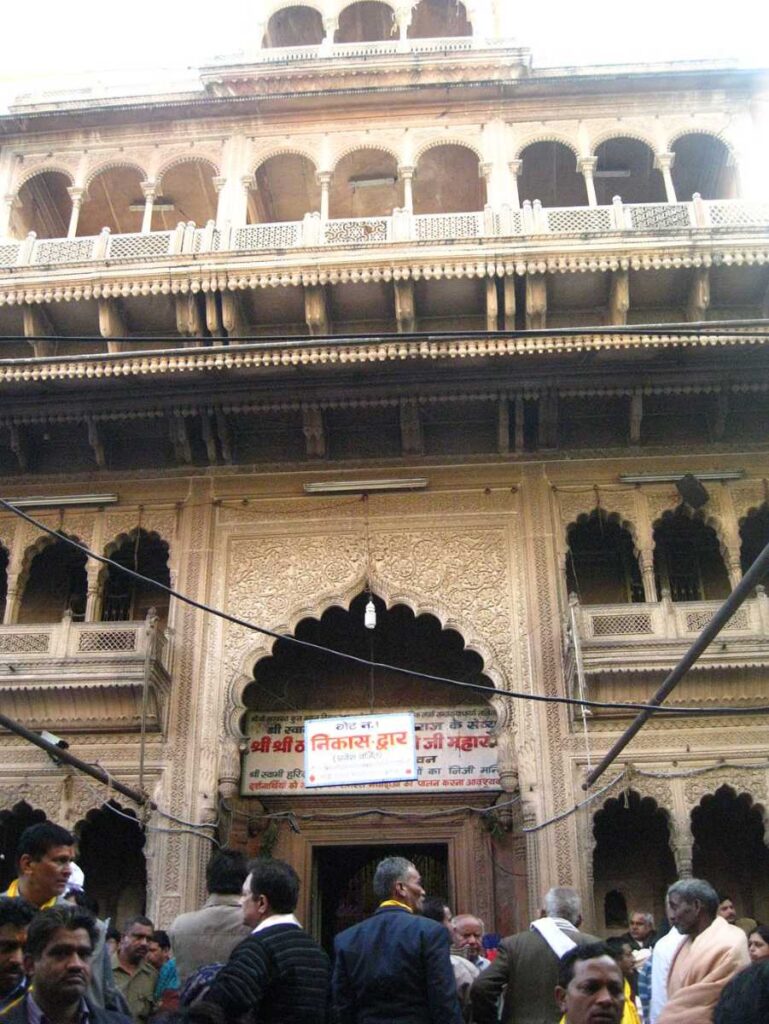
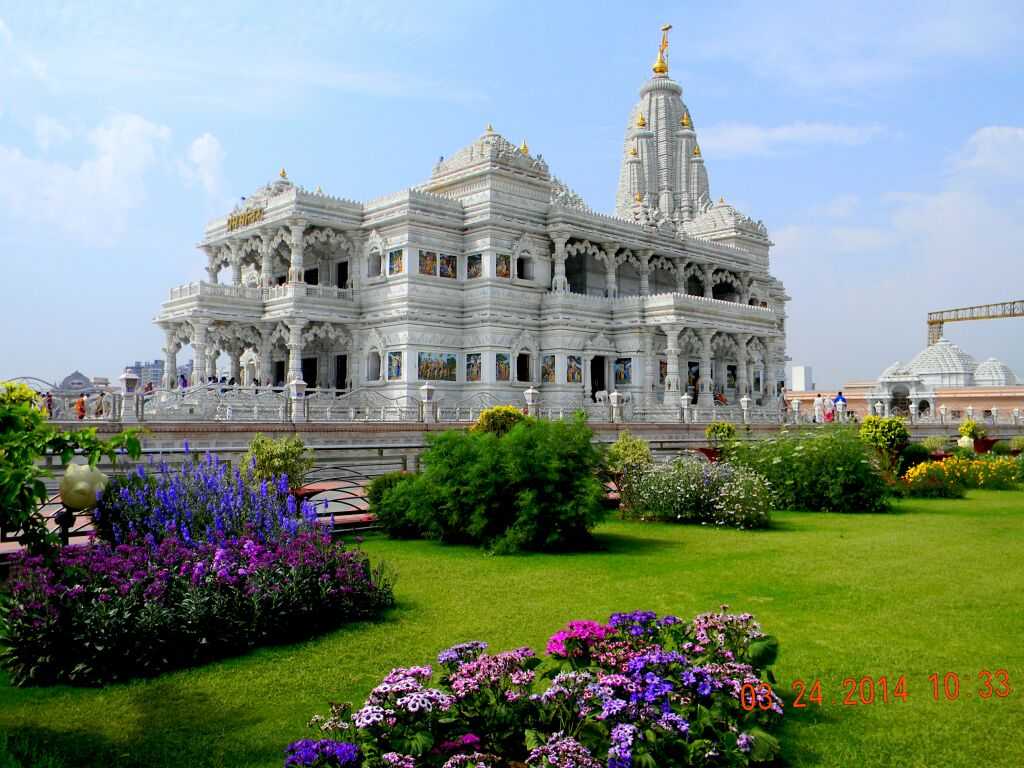
2.Prem Mandir
Imbued with elegance and grandeur, the Prem Mandir is a massive temple that was shaped by Jagadguru Shri Kripaluji Maharaj in the year 2001. Known as “Temple of God’s love”, this grand religious place is dedicated to Radha Krishna as well as Sita Ram. Located in Vrindavan, the holy city in the district of Mathura in Uttar Pradesh, the temple is enveloped with piousness and serenity. This newly constructed temple is the most beautiful in the entire Brij area and is crowded with devotees during the time of the Aarti.
Made out of white marble and adorned with very intricate carvings, this temple is also famous for its architectural beauty. Statues of Shri Krishna and his admirers, portraying essential occasions surrounding the Lord’s life, cover the main temple. Various scenes from Krishna’s life, like raising the Govardhan Mountain, have been depicted on the periphery of the Prem Mandir. The lighting of the temple further glorifies its spectacular look, especially during the night. The colored water twists and twirls to the tunes of the kirtans of Radha Krishna being played nearby and are an audio-visual delight.
3. ISKCON Vrindavan
Also known as Sri Sri Krishna Balaram Mandir, ISKCON Vrindavan is a dream fulfilled of Swami Prabhupada (the founder-acharya of ISKCON), who wished to build a temple for the brothers – Krishna and Balaram – in the same holy city where they played together several centuries ago. Located in the Raman Reti area of Vrindavan, ISKCON temple has become the major attraction in the city and is thronged by devotees from nearby Delhi and all over the world. People visiting the divine temple are spellbound by the Aarti and Bhagavad Geeta classes held here every day.
The three altars at ISKCON Vrindavan are the seats of Sri Sri Gaura Nitai, Shri Krishna and Balaram and Sri Sri Radha Shyamasundara along with Lalita and Vishakha. The presiding deity of the temple, however, is Lord Krishna-Balaram. There are two idols on the central slab of the temple which depict Krishna and Balarama, who were brothers. On the right dais are the idols of their friends. On the left side is a statue of Chaitanya Mahaprabhu with Nityananda, and of Bhaktivedanta Swami Prabhupada and his spiritual coach Bhaktisiddhanta Sarasvati Thakura. Krishna-Balaram Mandir implements great ethics of hygiene and deity adoration in the whole of Vrindavan.
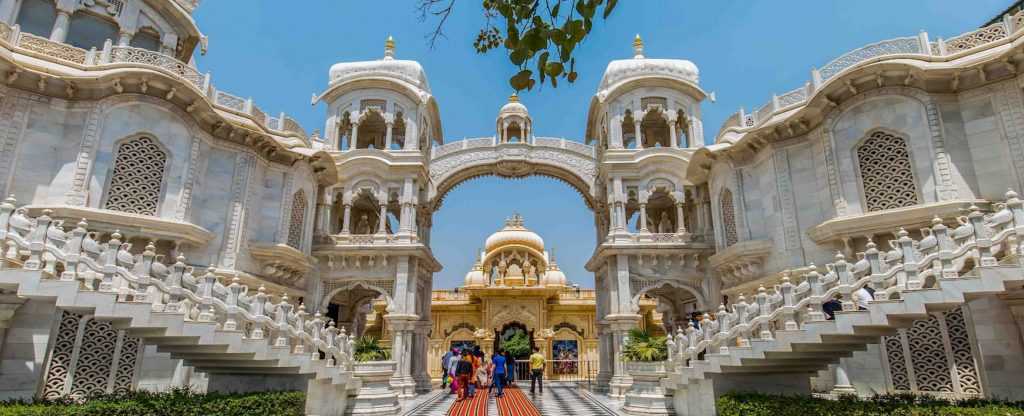
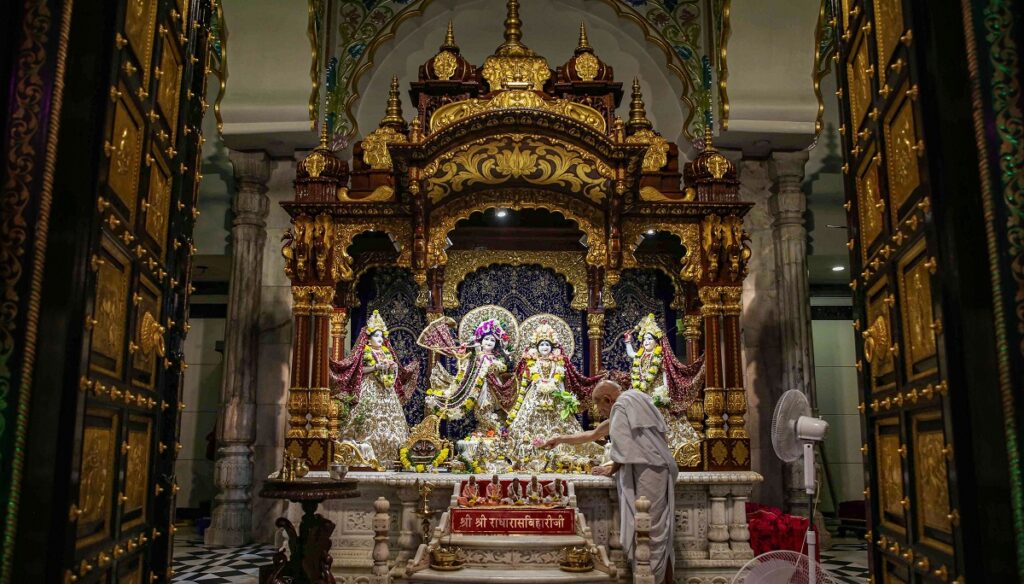
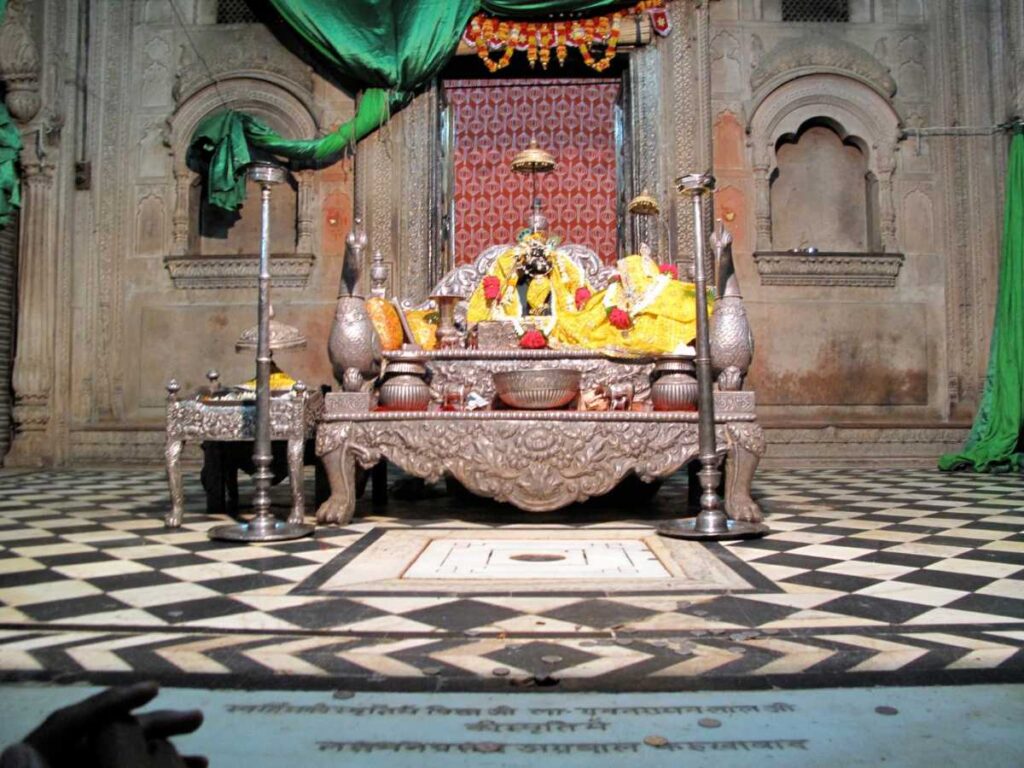
4. Radha Raman Temple
Located about 2 kilometers from the Vrindavan Railway Station is one of the most revered early modern Hindu temples in Vrindavan, the Radha Raman Temple. It is dedicated to Lord Krishna, who is considered to be Radha Raman, meaning one who gives pleasure to Radha. The temple is known to have the original Shaligram deity of Krishna alongside Radharani, which is the self-manifested deity from Shaligram Shila and has a mystical smile on his face. The Radha Raman temple complex also has the samadhi of Gopal Bhatta, located right next to the appearance place of Radha Raman.
Radha Raman Temple is said to be one of the most significant among the 7 temples of Thakur of Vrindavan. It holds importance especially among the followers of Gaudiya Vaishnavism. The temple was beautifully crafted when it was established in 1542 but was renovated later in 1826 by Shah Behari Lallji. Another interesting fact about this temple is that even though it is dedicated to and named after Radha, there is no deity of Radha Rani in the temple. There is only a crown kept next to Krishna to signify her presence.
5. Radha Bhallabh Temple
Situated near Gotam Nagar on the cliff near Bankey Bihari temple is the Radha Vallabh Mandir, one of the seven temples of Thakur of Vrindavan. This temple is the epitome of the sacred and divine love of Radha and Krishna, displayed in the rarest form ‘Ras-bhakti’. Enshrined by Lord Krishna, the temple does not have a deity of Radha. Instead, it has a crown placed next to Lord Krishna to signify her presence. Radha Vallabh Mandir stands out due to its striking architecture and magnificence decor.
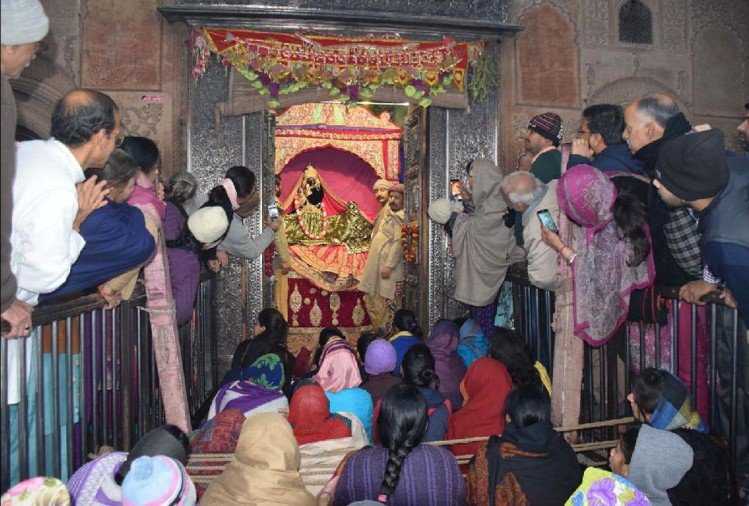
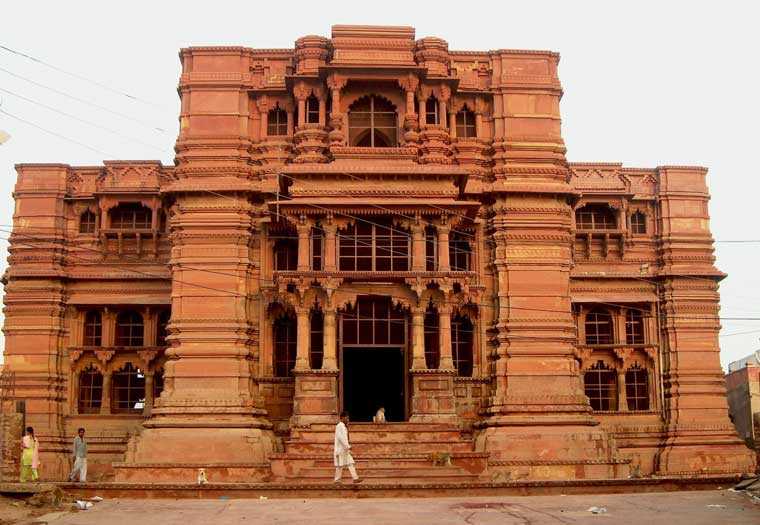
6. Govind Dev Temple
Govind is the other name of Lord Krishna which is literally translated to the god of cattle in Sanskrit. The Govind Devji temple, along with those of the other four presiding deities are considered to be the oldest and believed to be established by King Vajranabh, the great-grandson of Sri Krishna about 5000 years ago.Highly influenced by the saint, Raja Man Singh, the son of Maharaja Bhagwan Das of Amer and a trusted general of Akbar, the Mughal Emperor, began the construction of the temple in 1590 A.D on the occasion of Akbar’s pilgrimage to Vrindavan. This seven-storied temple was ordered for destruction by the Mughal ruler, Aurangzeb in 1670. However, while his men were at work, it is believed that the ground started shaking and the destruction was abandoned at three stories.
7. Madam Mohan Temple
Madan Mohan Temple, also known as Sri Radha Madana Mohan Temple, is the oldest temple in Vrindavan. Located close to Kaliya Ghat, on Dwadashaditya hill overlooking Yamuna River, it is 50ft high. It is believed that Lord Krishna rested at this site after conquering Kaliya Naag. Radha and Lalita Sakhi are worshipped here along with Madana Mohan (Sri Krishna). The view of Vrindavan from the temple is stunning.
Madan Mohan Temple is believed to be originally built by great-grandson of Lord Krishna – Vajranabh. Despite being so old, the architecture depicts exquisite craftsmanship. While the central tower houses idols of Radha, Krishna and Lalita Sakhi, the right tower houses the bhajan kutir and samadhi (cenotaph) of Sri Sanatana Goswami. The left tower remains closed. The Advaita Vat is also housed inside Madan Mohan Temple. It is the oldest banyan tree in Vrindavan.
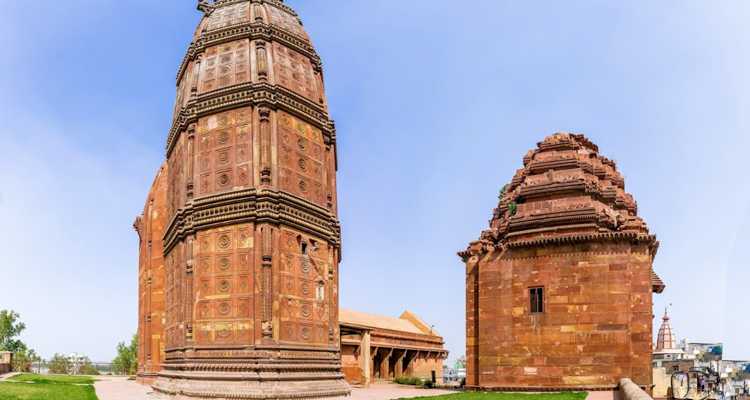
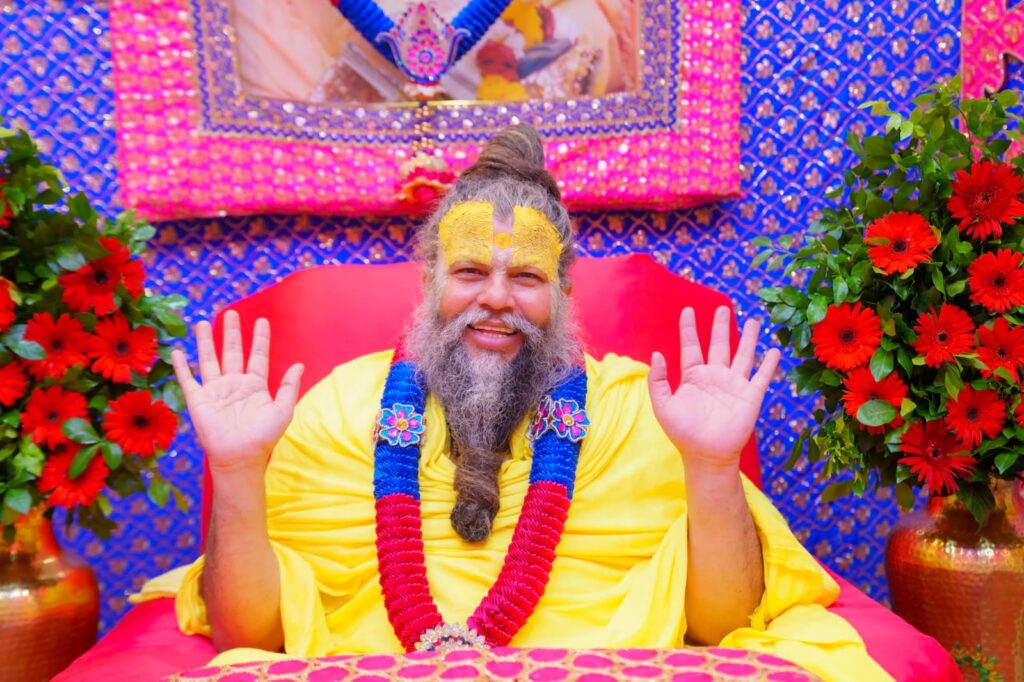
8. Radha Keli Kunj
Pujya Shri Hit Premanand Govind Sharan Maharaj is a Rasik Saint from Vrindavan. He epitomizes the “Sahchari Bhav” or “Sakhi Bhav” initiated by Anant Shri Vibhushit, Vanshi Avtar, Paratpar Prem Swaroop – Shri Hit Harivansh Mahaprabhu.
Genuine spiritual guidance has become exceedingly rare in present time. However even in these days and this age, Pujya Maharaj Ji is relentlessly simplifying key spiritual concepts and making it palatable for the common man. Not only is He providing aspirants, a solid foundation but also is one of the few Rasik Saints who is graciously bestowing the most confidential and supremely sacred ‘Vrindavan Nivrit Nikunj Upasana’ and ‘Nitya Vihar Ras’ which was first shared by Prem Swaroop, Vanshi Avtar Shri Hit Harivansh Mahaprabhu.
9. Tatiya Sthan, Vrindavan
Tatiya Sthan is the place of pure natural beauty. At Tatiya Sthan, one actually goes back many centuries ago, living in close association with nature. It is a place of purity, divinity and spirituality. History: Tatiya Sthan is linked to the Swami Haridas Sampradaya. There are eight acharyas of the Haridas Sampradaya. The seventh aacharya, Swami Lalit Kishori Dev ji resided on this earth between 1758 and 1823, in order to go and meditate somewhere under a secluded tree. They fenced the whole area using bamboo sticks. Bamboo sticks are called “Tatiya” in the local dialect. This is how the place was named Tatiya Sthan. They also suggested to him that on Radha ashtmi, Sri Haridas ji’s appearance day should be celebrated and since then the festival is celebrated with lot of love. His samadhi is also at Tatiya Sthan. Significance of Tatiya Sthan: Tatiya Sthan is filled with various kind of trees, especially those which were close to Lord Krishna’s heart, like, neem, peepal and kadamb. The place is to perform sadhna bhakti, and no one is allowed to talk here unnecessary.
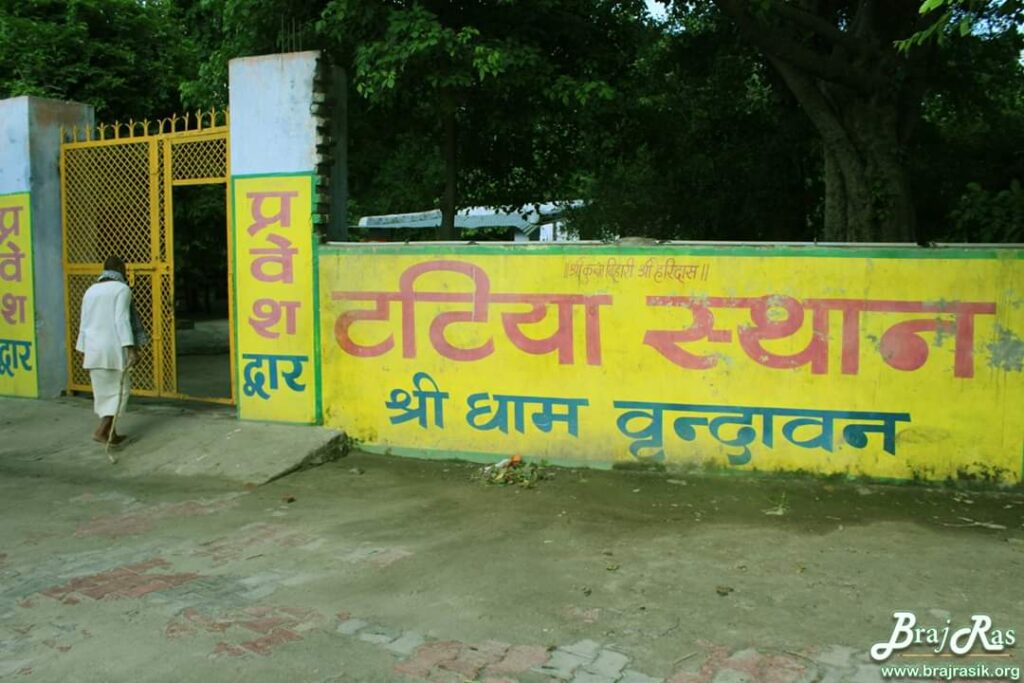
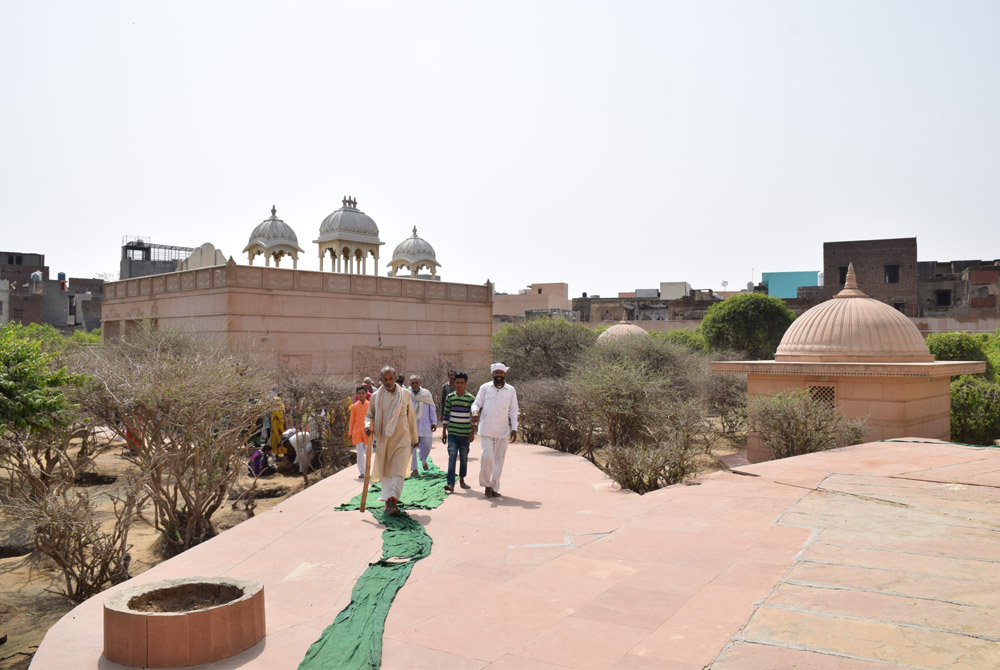
8. Nidhivan Raj
Vrindavan is witness to the childhood of Lord Krishna and hence has many places where the lord himself has performed many playful acts. Nidhivan in Vrindavan is one such temple which has seen the notorious acts of the Lord himself. This beautiful orchard of Tulsi in Vrindavan is a pious destination that draws attention of many devotees due to the many mysteries associated with it. As the name signifies, Nidihivan implies to a treasured (Nidhi) forest (van). True to its name, this pious place is home to many rare species of plants that keep the premises flocked with devout atmosphere. According to the legends, every plant in the Nidhivan Temple is the disguised Gopi who had participated in the Maha Raas with Lord Krishna.
9. Seva Kunj, Vrindavan
Seva Kunj Mandir in Vrindavan is magnificent place showing the divine love of Radha Ji and Kanhaji. Seva Kunj is also known as “Nikunj” Van. This place is close to Lord Krishna’s heart. There is a beautiful idol of Radha Krishna in this temple. There is also a kund here known as Lalita Kund. It is believed that every night Lord Krishna and Radha Rani visit this place. So, this place is closed totally after evening. Although we can see many monkeys during daytime but by evening, they also leave this place. Seva Kunj in Vrindavan is addressed so because it is believed that Lord Krishna served the Radha Rani in this sacred place. Krishna helped her in getting ready for Raas Leela by combing hair and decorating her with ornaments. This can be depicted by the mesmerizing painting on the wall and the shlokas inscribed here from the Hindu Scriptures.


10. Devraha Baba ASHRAM
Sri Devraha Baba is one of the greatest yogis in the history of India, he is the eleventh in the lineage from Sri Ramanuja Acharya (the saint philosopher from the south of India, the founder of Vaishnavism) and one of his outstanding disciples. He always radiated love. He was Premasvarupa, (truly spiritual) incarnation of love. People of all castes and classes used to come to bow to him from all over India. He was loved by indian politicians, he was visited by Indira and Rajiv Gandhi, ministers, saints, yogis, priests, rich and poor people – all used to come to darshan (spiritual blessing) to Baba.
11. NEEB KARORI BABA ASHRAM
The wonderful Neeb Karori Baba Vrindavan Ashram is located in Krishna’s holy city of Vrindaban on the plains of Uttar Pradesh. The first temple was inaugurated in 1967. This ashram is on Parikrama Marg a short ways from Mathura Road. It was in Vrindaban that Maharaj-ji chose to leave His body in 1973.
Within this ashram is the Mahasamadhi Mandir of Neem Karoli Baba / Neeb Karori Baba. This is the site of Maharaj-ji’s Mahasamadhi Bhandara in September. This ashram has experienced a lot of growth, including addition of a Ram-Sita-Laxshman-Hanuman Mandir, new ashram rooms, new paint, an excellent new kitchen, and large meeting hall.
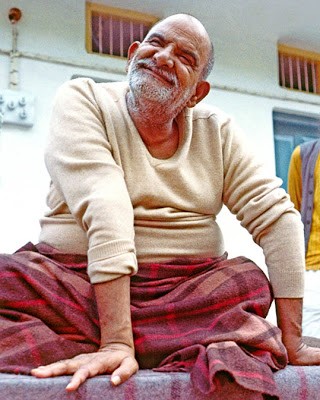
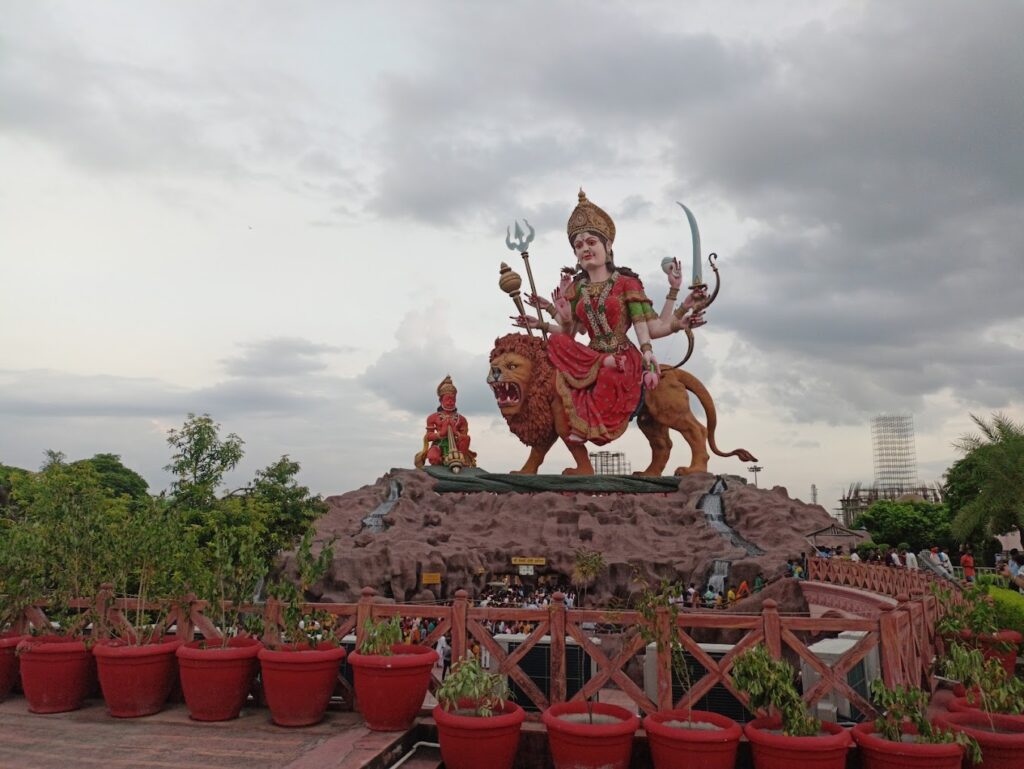
12. VAISHNO DEVI MANDIR
Maa Vaishno Devi is believed to grant four boons to her devotees namely Dharma (Righteousness), Artha (Material Pursuits), Kaama (Contentment), and Moksha (Enlightenment).
The Maa Vaishno Devi Dham, located in the holy city of Vrindavan, was founded by Sh. J C Chaudhry. Spread across 12 acres of land, the Dham provides an opportunity to all the devotees of Maa Vaishno Devi to worship their goddess and serve the poor alongside. Every year lakhs of devotees visit the Dham from all parts of India and abroad.
Sh. J C Chaudhry is the Managing Trustee and the founder of Maa Vaishno Devi Dham at Vrindavan. With a staunch belief in Maa Vaishno Devi, whom he always considers as a source of support and inspiration, Sh. J C Chaudhry established the Dham to reciprocate to the Goddess for all her love, care, and blessings.

14. Chandrodaya Mandir
The devotees of ISKCON Bangalore have conceived the Vrindavan Chandrodaya Mandir project aspiring to create a world-class, iconic monument for Sri Krishna in the holy land of Vrindavan in pursuance of Srila Prabhupada’s direction.
The site of Vrindavan Chandrodaya Mandir is located on the Bhaktivedanta Swami Marg, which is the main access to Vrindavan town. The skyscraper temple-cum-heritage project will consist of a magnificent temple of Lord Sri Krishna at its centre, and harmoniously combine elements of both Indian temple architecture and modern architecture. Our project will represent the culture and heritage of the sacred land of Braj. The architecture will be inspired by two prominent, ancient temples of Vrindavan – Sri Madanmohanji Mandir and Sri Radha Govindji Temple.
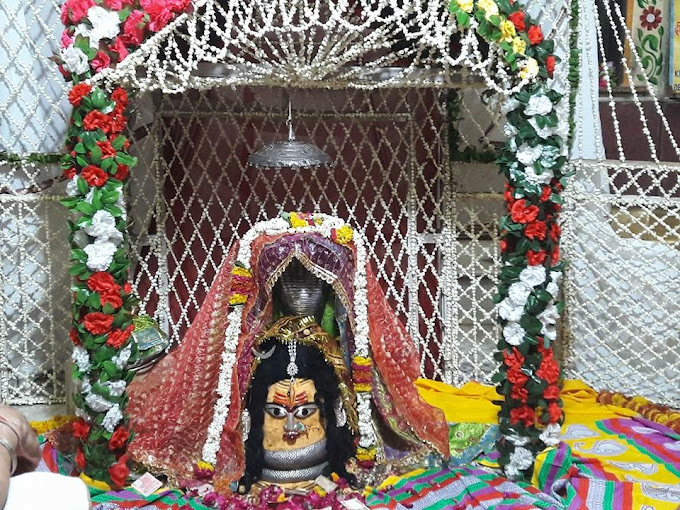
16. Gopeshwar Mahadev Ji Temple
Gopeshwar Mahadev Temple in Vrindavan is one of the most ancient temples of the city. According to the legends, Radha Rani made a rule that only females can participate in the Raas Leela of Krishna with his various consorts and Radha Rani. Lord Shiva also wanted to participate in the blissful Raas Leela, hence he disguised as a Gopi. The Gopeshwar Mahadev Temple in Vrindavan idolizes the Shiva disguised as a gopi.
Gopeshwar Mahadev in Vrindavan is generally flocked with pilgrims on Mondays due to the auspiciousness of the day’s association with lord Shiva himself. In Shravan, the Hindu month visiting this temple paves the way to salvation. Pilgrims flock Gopeshwar Mahadev Temple to catch the glimpse of the lord’s embellishment as Gopi. In the Sravan month which falls in July:August, visiting this temple is a soulful bliss.
15. SHRI RADHA MANSAROVAR MANDIR
This place possesses the power to enhance people a feeling of enlightenment legend hides the beauty of this place, as Sri Radha had once got annoyed from Sri Krishna and came to this place.
It was here where Sri Krishna had pleased her and, since then it is called “Maansarovar”= ‘Maan’-anger & ‘sarovar’ -refers to the lake beside the temple. The place is a wonderful spot to relax nerves of mental stress as the beauty of lake, nature, sounds of birds around is a rare combination to locate.
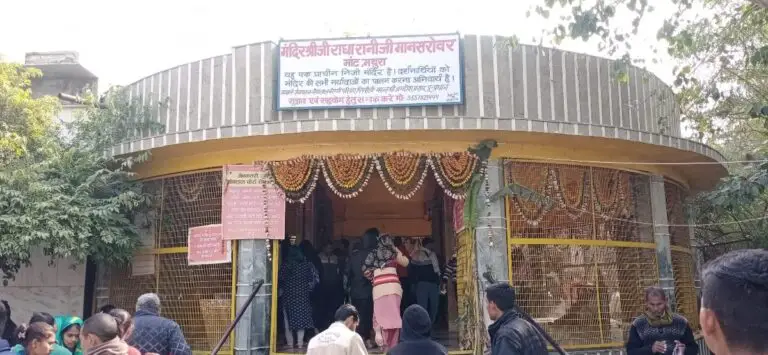
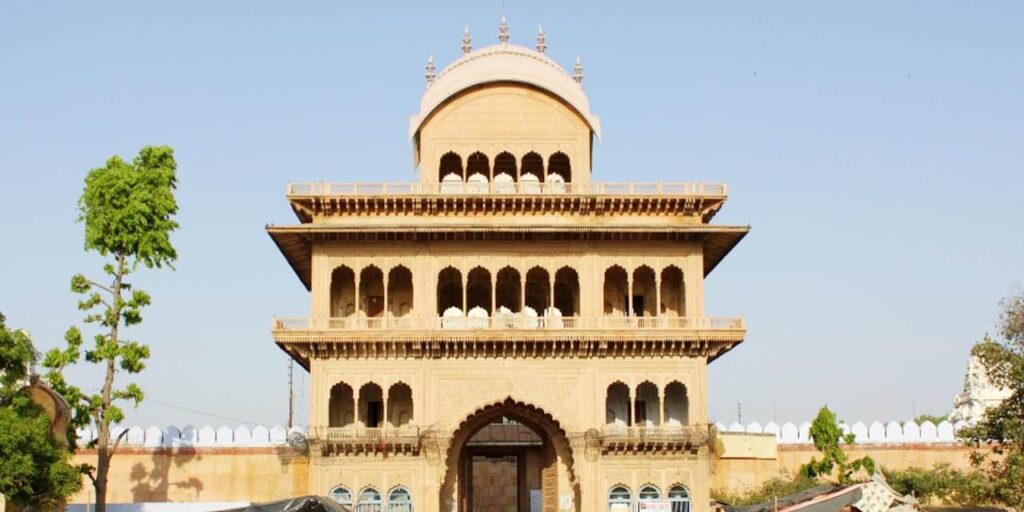
16. RANG JI MANDIR
The Rangji temple, founded by Seths Gobind Das and Radha Krishan, brothers of the famous millionaire Lakhmi Chand, is dedicated to Rang Ji, or Sri Ranga Nath, that being the special name of Vishnu most affected by Ramanuja, the founder of the Sri Sampradaya. It is built in the Madras style, in accordance with plans supplied by their guru, the great Sanskrit scholar, Swami Rangacharya, a native of that part of India.
17. Akshaya Patra
The temple is in the form of a blooming lotus and the statues of deities of Radha and Krishna that are among the temples’ main attractions are located on the first floor, inside the semi-spherical structure of the temple. Two separate staircases leading to and back from the first floor allows for free movement of people. The domed structure above the temple stretches to a height of around 25 feet and is constructed in a way that allows sunlight inside the temple.
